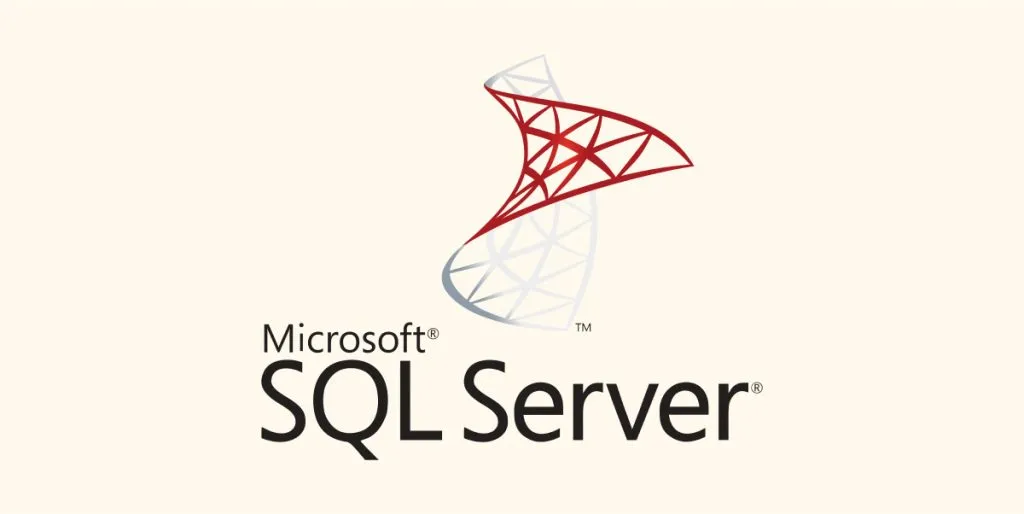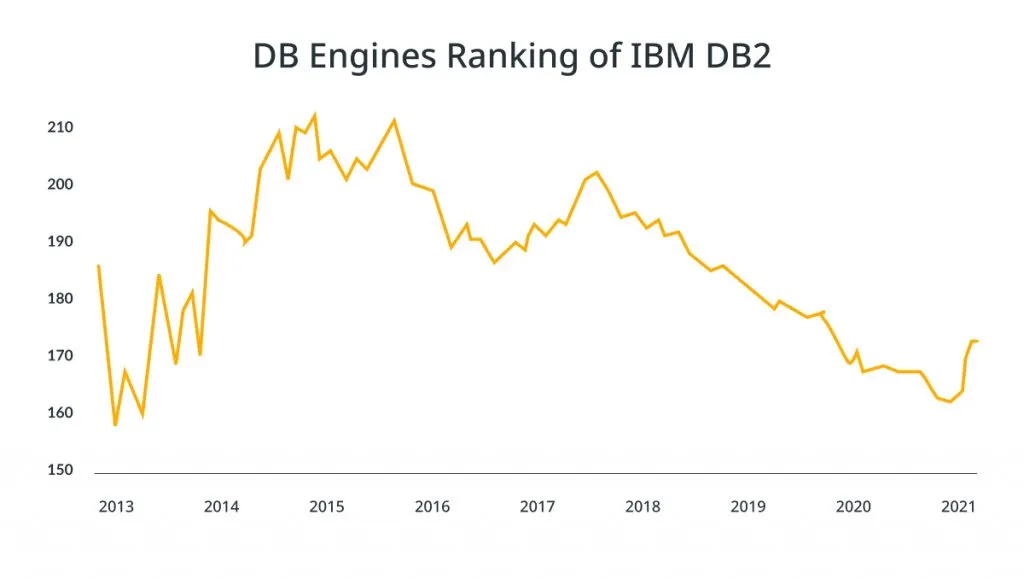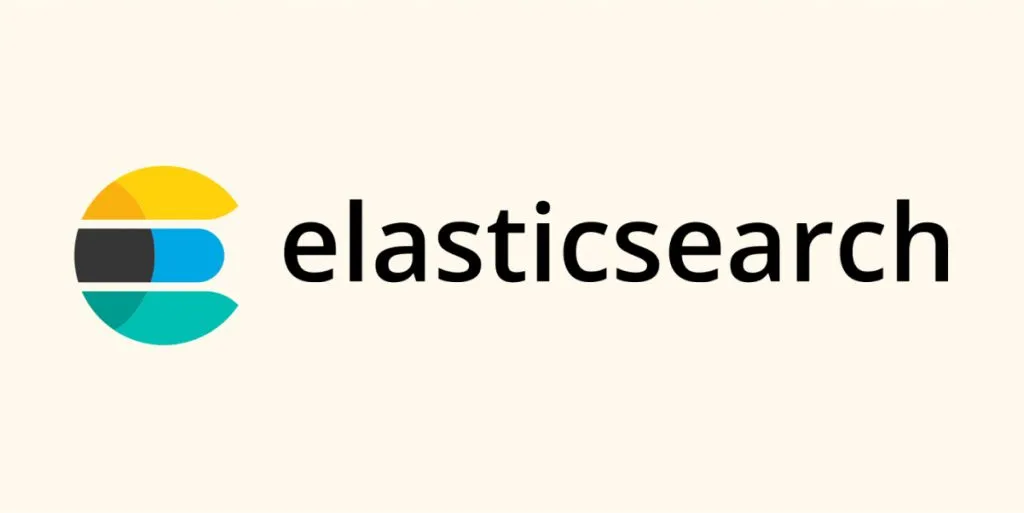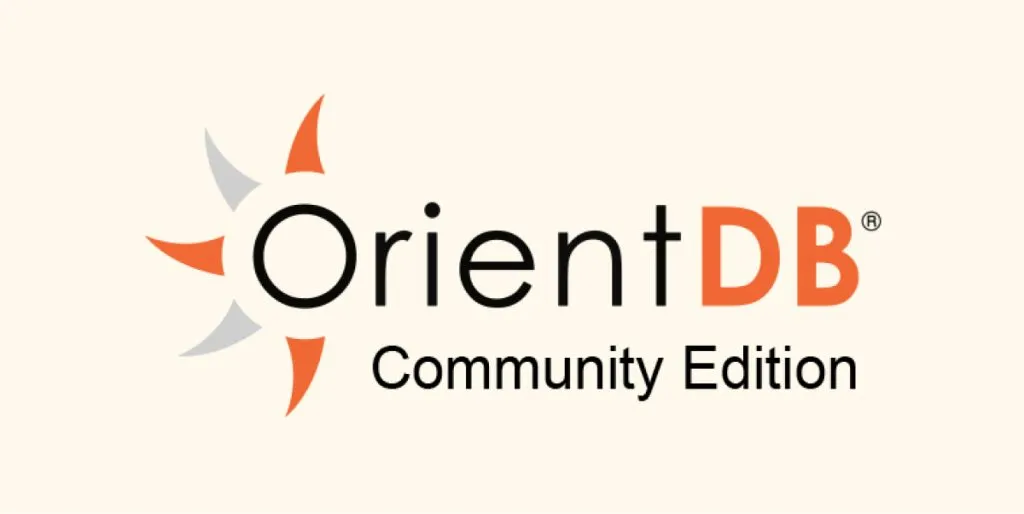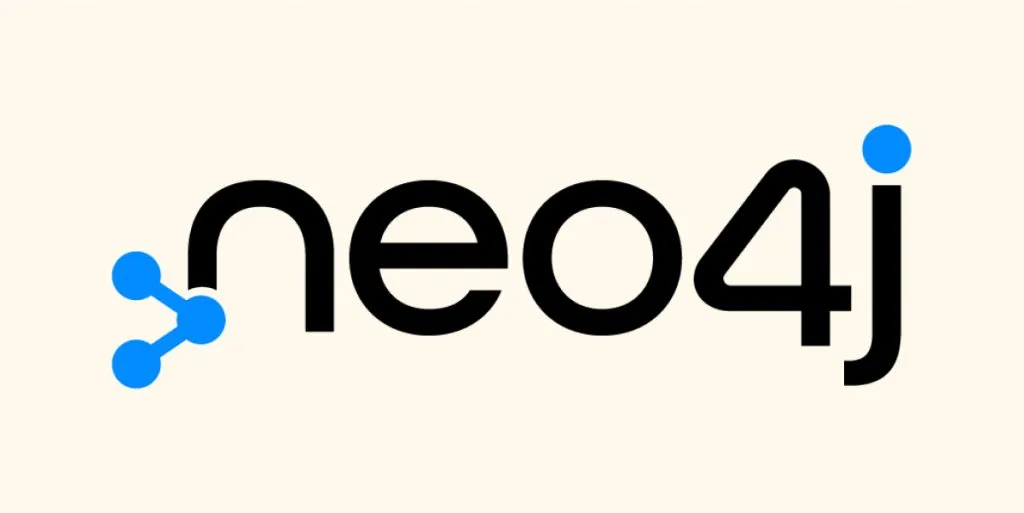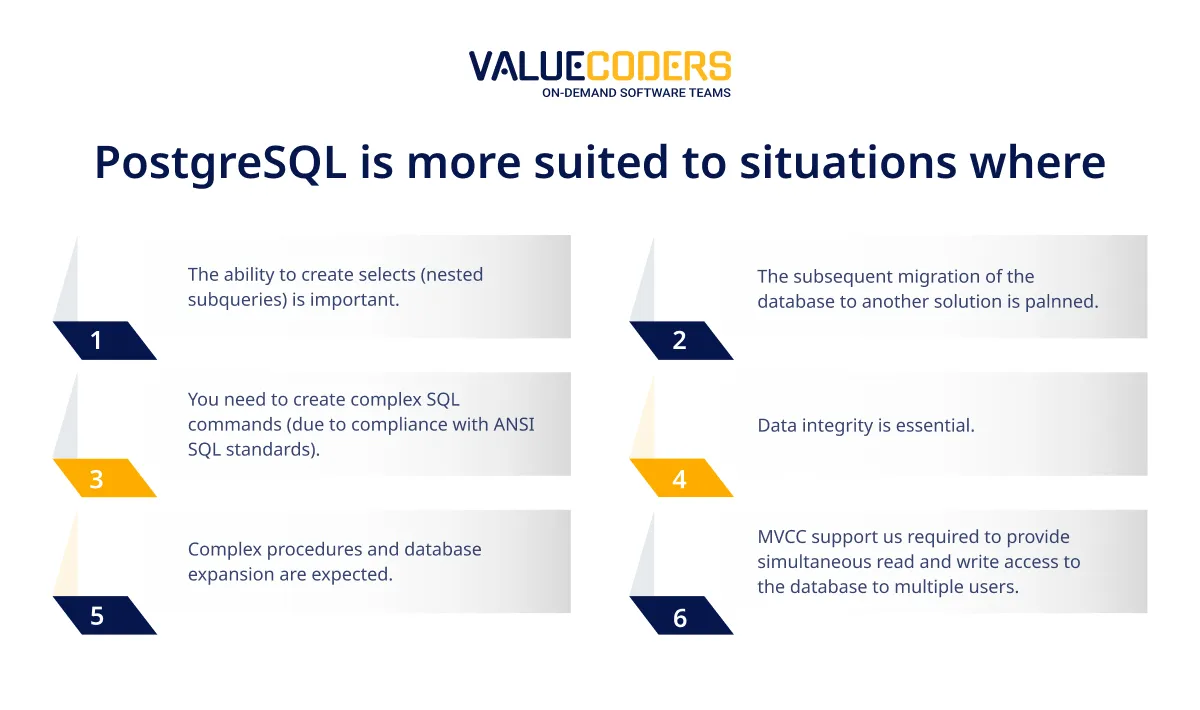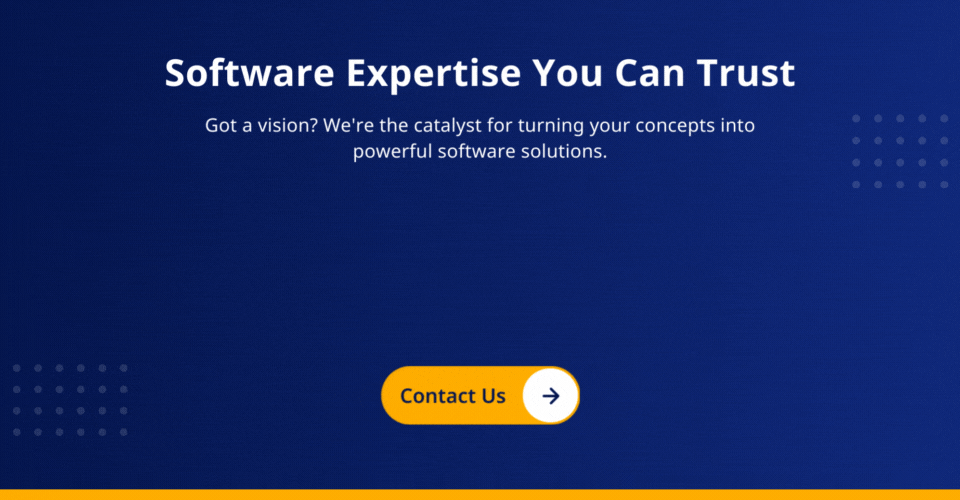In the dynamic landscape of web development, the importance of a robust database cannot be overstated.
As businesses, whether small or large, continue their digital transformation journey, efficient data management becomes paramount.
The database management system software emerges as a pivotal solution, serving as the backbone for organizing and safeguarding sensitive information generated at every touchpoint.
Diverse Database Ecosystem
With the evolution of technology, traditional SQL databases face competition from various fronts like NoSQL, NewSQL, and Cloud databases. This diversification is fueled by the rise of Microservices, Cloud computing, and the handling of Semi-Structured Data and Big Data with low latency requirements. This shift presents both opportunities and challenges for data integration specialists, including those working with tools like SSIS, as they need to adapt to a more diverse and dynamic data landscape.
Strategic Insights Through Data Visualization
As companies delve into the expansive realm of web applications, extracting meaningful insights from stored data becomes a strategic imperative. Through the adept use of data visualization, businesses can transform raw data into actionable intelligence, driving informed decision-making.
Web App Development Trends
In web development, particularly Java web application development, choosing the right database is pivotal. Whether it’s for custom web app development services or aligning with the best web development languages, selecting a suitable database is critical.
Market Trends and Projections
Reports from reputable sources underscore the significance of databases, especially in Customer Relationship Management (CRM) applications.
According to business.com, a staggering 91% of companies with more than 11 employees utilize CRM software.
The mobile CRM market, as projected by Future Market Insights, is anticipated to witness a substantial Compound Annual Growth Rate (CAGR) of around 13% from 2019 to 2029.
In this blog, we will navigate through the ever-expanding databases list, offering insights for businesses seeking to optimize their web development endeavors. Stay tuned for an in-depth exploration of the databases shaping the future of web applications.
Discover seamless integration with ValueCoders' services for unparalleled web app success.
Hiring proficient developers from top web application development company india becomes paramount for those embarking on this transformative journey.
Our blog will not only shed light on powerful web development tools but also guide you in selecting the right database for your needs.
Whether you’re exploring front-end development services or delving into the intricacies of backend development services, our comprehensive guide will be your compass in the complex world of web application databases.
Choosing the Best Database for Web Applications in 2025: A Comparative Overview
In web application development, selecting a suitable database is critical. In 2022, two standout options are Oracle and MySQL, each bringing its unique strengths.
1. Oracle
Oracle is the most widely used commercial relational database management system (RDBMS), incorporating assembly languages like C, C++, and Java.
Advantages:
- Performance: Processes data faster and is known for efficient space utilization.
- Innovative Features: Version 21c introduces new features, including enhanced JSON capabilities in SQL.
2. MySQL
MySQL remains a stalwart in the database landscape, particularly favored in web application development for its emphasis on stability, robustness, and maturity.
Key Features:
- Stability: Prioritizes stability, ensuring reliable performance.
- Maturity: Known for its mature and well-established nature.
- Latest Version: MySQL 8.0 introduces improved recovery options, enhancing data security.
3. MS SQL Server
MS SQL Server, a flagship product, is backed by Microsoft’s robust toolset support, ensuring a seamless experience for users both on-premise and in the cloud.
Notably, MS SQL Server exhibits compatibility with diverse operating systems, including Linux and Windows, offering flexibility in deployment.
Setting it apart, MS SQL is a versatile multi-model database supporting various data models, including Structured Data (SQL), Semi-Structured Data (JSON), and Spatial Data.
Key Features:
- Structured and Semi-Structured Support: MS SQL’s strength lies in its ability to handle both traditional Structured Data, managed through SQL, and Semi-Structured Data like JSON.
- Spatial Data Management: A distinctive feature is its support for Spatial Data, catering to applications where geographic or spatial information is integral.
Evolution Over the Years:
While not claiming the same level of innovation as some newer databases, MS SQL Server has consistently evolved. Substantial improvements and overhauls showcase a commitment to staying relevant in the dynamic database landscape.
4. PostgreSQL
PostgreSQL, initially known as POSTGRES, holds a rich history. Notably, its creator, Michael, received the prestigious Turing Award for his significant contributions to the development of PostgreSQL.
Key Attributes:
- Written in C: PostgreSQL is crafted in the C programming language, ensuring a robust and efficient foundation for managing extensive datasets.
- Versatile Industry Applications: Tailored for businesses dealing with large volumes of data, PostgreSQL finds applications in diverse sectors, including gaming apps, database automation tools, and domain registrations.
Contributions Recognized:
Michael’s recognition with the Turing Award underscores the substantial impact of his contributions to PostgreSQL. This accolade highlights the database’s significance in the realm of data management.
Wide-Spanning Usage:
- Gaming Apps: PostgreSQL’s usage extends to the dynamic world of gaming applications, emphasizing its suitability for real-time data processing.
- Database Automation Tools: Businesses leverage PostgreSQL for streamlined database management through automation tools, enhancing efficiency and reliability.
- Domain Registrations: In critical domains like domain registrations, where data accuracy and integrity are paramount, PostgreSQL emerges as a trusted database solution.
5. MongoDB
In the landscape of popular databases for 2022, MongoDB stands out as a trailblazer in the NoSQL category.
Released in 2009, MongoDB represents the inaugural Document Database management software.
MongoDB emerged in response to challenges encountered in loading and accessing data into Relational Database Management Systems (RDBMS) using object-oriented programming languages.
Key Considerations:
- Document Data Handling: MongoDB’s primary strength lies in its adept handling of Document Data, offering a more streamlined approach compared to traditional RDBMS.
- Eliminating Mapping Challenges: The database mitigates complexities associated with loading data into RDBMS, particularly the need for additional application-level mapping.
Use Case Significance:
- Industry Adoption: MongoDB’s significance extends beyond its inception, gaining popularity across diverse industries and applications.
- NoSQL Dominance: As the first Document Database, MongoDB plays a pivotal role in shaping the dominance of NoSQL databases in modern data management.
6. IBM DB2
IBM’s DB2, available as DB2 LUW for Windows, Linux, and Unix, showcases its adaptability across diverse operating systems.
The most recent iteration, DB2 11.5, not only reflects IBM’s commitment to innovation but notably enhances query execution speed.
Key Features:
- Relational Model Support: Originally known for its robust support for the relational model, DB2 has evolved to encompass a more extensive range of functionalities.
- Object-Relational Capabilities: Keeping pace with industry trends, DB2 now seamlessly integrates object-relational features, offering a more comprehensive data management approach.
- Non-Relational Forms Inclusion: In response to the evolving needs of modern databases, DB2 extends its support to non-relational forms such as JSON and XML.
Adapting to Modern Requirements:
- Mobile App Integration: The significance of databases for mobile apps cannot be understated, and DB2 aligns with this demand by not only supporting the relational model but also catering to newer forms and structures.
- Continuous Growth: The expansion of DB2’s capabilities over recent years positions it as a dynamic and evolving player in the database landscape.
Partner with ValueCoders for Java web application development expertise.
7. Redis
Redis stands out as a widely embraced open-source database project, garnering significant attention and usage within the developer community.
According to Stack Overflow’s Annual Developer Survey, Redis holds the prestigious title of being the Most Loved Database platform, a testament to its popularity and positive reception.
Versatile Capabilities:
- Distributed, In-Memory Database: Redis positions itself as a distributed, in-memory key-value database, emphasizing speed and efficiency in data retrieval and storage.
- Beyond a Database: Redis extends its utility beyond traditional database functions. It can seamlessly serve as a distributed cache, optimizing data access times, and also function as a message broker.
- Durability as an Option: Redis offers flexibility as an optional feature, ensuring data persistence according to specific use case requirements.
Community Recognition:
- Annual Developer Survey: Redis’s acknowledgment as the Most Loved Database in Stack Overflow’s survey reflects not only its technical prowess but also its positive impact on the developer experience.
- Widespread Adoption: The versatility of Redis, spanning database, cache, and message broker functionalities, contributes to its widespread adoption across various development scenarios.
8. Elasticsearch
Elasticsearch, an open-core full-text search engine, builds on the robust foundation of Lucene. Shay Banon introduced this powerful tool in 2010, and it has since become a cornerstone in the realm of full-text search engines.
Key Features:
- Distributed Capability: Elasticsearch boasts a distributed, multi-tenant architecture, enhancing its scalability and enabling efficient handling of diverse search requirements.
- REST API Integration: With a REST API at its core, Elasticsearch ensures seamless integration into various applications and systems, providing a standardized and accessible interface.
Scalability and Sharing:
- Horizontal Scaling: Elasticsearch offers horizontal scaling through automatic sharing, a critical feature for managing large volumes of data efficiently.
- Structured and Schema-Less Data Support: The platform’s adaptability shines through its support for structured and schema-less data in JSON format. This flexibility is particularly advantageous for analyzing, Logging, or Monitoring data.
Versatile Use Cases:
Elasticsearch’s support for JSON and its distributed nature makes it especially well-suited for the analysis of Logging or Monitoring data.
9. Cassandra
Cassandra, developed in 2008, stands as an open core, distributed, wide column store, and is a prevalent choice for applications requiring robust database solutions.
Key Characteristics:
- Distributed Architecture: Cassandra’s distributed nature is a key strength, allowing it to efficiently handle large datasets across various nodes.
- Wide Column Store: Operating as a wide column store, Cassandra is optimized for handling vast amounts of data with a flexible and scalable structure.
Scalability at its Core:
Cassandra shines as a highly scalable database management software, making it a go-to solution for industries dealing with massive datasets and demanding workloads.
Fault Tolerance and Reliability:
- Decentralized Database: A standout feature is its decentralized (Leaderless) database architecture, promoting fault tolerance and ensuring robustness without single points of failure.
- Automatic Replication: Cassandra’s automatic replication further contributes to its fault-tolerant nature, enhancing data redundancy and availability.
- Multi-Data Center Replication: With multi-data center replication, Cassandra extends its reliability across geographically dispersed locations, catering to diverse business needs.
Operational Diversity:
Cassandra offers a range of operations and infrastructure, providing flexibility for varied use cases within different industries.
Comparative Insight:
Cassandra vs. HBase: Cassandra and HBase, while sharing some similarities, cater to distinct use cases based on their inherent characteristics and strengths.
10. MariaDB
MariaDB is a robust Relational Database Management System (RDBMS), distinguished by its compatibility with the MySQL Protocol and Clients.
One of MariaDB’s notable strengths is its seamless compatibility with the MySQL server. It allows for a straightforward replacement, requiring no code changes and ensuring a smooth transition for users.
Innovative Features:
- Columnar Storage: MariaDB introduces columnar storage, enhancing data retrieval efficiency and optimizing performance for specific types of queries.
- Massively Parallel Distributed Data Architecture: Embracing a massively parallel distributed data architecture, MariaDB ensures scalability and high-performance capabilities.
Community-Driven Dynamics:
MariaDB distinguishes itself by being more community-driven compared to MySQL. This emphasis on community involvement fosters a collaborative environment for continuous improvement and innovation.
Seamless Transition from MySQL:
MariaDB’s compatibility with MySQL extends to code-level harmony, facilitating a transition without altering existing codebases.
11. OrientDB
OrientDB stands out as an open-source NoSQL multi-model database program, offering businesses a versatile solution that obviates the need for multiple systems to handle diverse data types.
Key Features:
- Graph Database Capabilities: One of OrientDB’s notable strengths is its ability to serve as a graph database management software, providing businesses with the power of graph-based data modeling.
- Eliminating System Proliferation: By supporting various database models, including graph, document, key-value, and object-oriented, OrientDB eliminates the need for businesses to build separate systems for handling different data types.
Versatility in Management Solutions:
- Multi-Model Support: OrientDB goes beyond traditional databases by supporting multiple models, optimizing performance and security while offering scalability.
- Graph, Document, Key-Value, and Object-Oriented Models: The inclusion of diverse models ensures that businesses can leverage the most suitable approach for their specific data management needs.
Performance and Security Focus:
- Enhanced Performance: OrientDB is designed to enhance performance across different data models, catering to the varied requirements of businesses in today’s dynamic landscape.
- Security Measures: Alongside performance optimization, OrientDB prioritizes security, providing a robust foundation for safeguarding sensitive data.
Scalability Advantage:
The multi-model support not only improves performance and security but also allows for scalability, ensuring that businesses can grow their databases seamlessly.
12. SQLite
SQLite stands as a powerful open-source SQL database, offering users an integrated relational database management system since its creation in the year 2000.
Notable for its simplicity, SQLite requires no complex configuration, server, or installation. This ease of deployment makes it an attractive choice for various applications.
Key Attributes:
- No Configuration Required: One of SQLite’s distinctive features is its minimalistic setup – users can start leveraging its capabilities without the need for intricate configurations.
- Server-Free Operation: Unlike traditional databases, SQLite doesn’t rely on a server, contributing to its lightweight nature and making it an efficient option for diverse use cases.
Functional Richness
Despite its simplicity, SQLite doesn’t compromise on functionality. It encompasses a range of commonly used database management system software features, making it a versatile choice for various applications.
Mobile Web Development Compatibility:
SQLite’s lightweight and server-free nature make it particularly well-suited for mobile web development, including platforms like React Native. Its efficient handling of data aligns with the demands of mobile applications.
ValueCoders crafts solutions in the best web development languages for lasting success.
13. DynamoDB
DynamoDB takes center stage as Amazon’s nonrelational best database, specifically designed to cater to the dynamic needs of modern applications.
Positioned as a serverless database, DynamoDB seamlessly scales up and down in response to demand, ensuring optimal performance for mobile apps while relieving users of infrastructure management burdens.
Key Features:
- Automated Scaling: DynamoDB’s automatic scaling is a standout feature, dynamically adjusting resources to accommodate varying workloads. This ensures efficient utilization of resources while maintaining responsiveness for mobile applications.
- Data Backups: The database offers automatic data backups, providing an added layer of data protection and resilience against unexpected events.
Security and Performance:
- Built-In Security: DynamoDB prioritizes security with built-in measures, safeguarding sensitive data and ensuring compliance with industry standards.
- In-Memory Caching: The inclusion of in-memory caching enhances performance, reducing latency and optimizing response times for seamless user experiences.
- Consistent Latency: DynamoDB’s commitment to consistent latency ensures that applications deliver predictable and reliable performance, critical for mobile app success.
14. Neo4j
Neo4j stands as a pioneering open-source NoSQL graph database, leveraging Java for its dynamic architecture. Launched in 2007, it revolutionizes data representation and querying through a graph-based paradigm.
Key Characteristics:
- Graph-Based Representation: Neo4j distinguishes itself by adopting a graph-based approach, where data is stored and processed as interconnected graphs rather than traditional tables. This unique structure enables a more intuitive representation of relationships within the data.
- Cypher Query Language: Neo4j employs Cypher, a specialized query language designed for expressing relationship queries efficiently and expressively. This language simplifies the exploration of complex relationships within the graph.
Graph Storage Advantages:
- Relationship-Centric Model: Neo4j’s innovative design focuses on relationships as a core aspect of data, allowing for the creation of efficient and interconnected structures. This approach is particularly advantageous for scenarios where relationships play a crucial role.
- Dynamic Relationship System: Neo4j’s dynamic relationship system offers agility, allowing the creation and utilization of new relationships as needed. This flexibility, often referred to as “shortcutting,” accelerates domain data retrieval and manipulation.
Efficiency through Relationships:
Neo4j’s relationship system is optimized for speed, facilitating the swift creation and utilization of relationships. This efficiency is paramount for scenarios where real-time relationship exploration is critical.
15. Firebird SQL
Firebird stands out as a free SQL relational database management system, offering robust functionality without the constraints of licensing costs. It seamlessly operates on Mac OS X, Linux, Microsoft Windows, and various Unix platforms, making it a versatile choice for diverse environments.
Key Features:
- Cross-Platform Compatibility: Firebird’s versatility is underscored by its ability to operate seamlessly across Mac OS X, Linux, Microsoft Windows, and various Unix platforms. This cross-platform capability ensures accessibility for a broad user base.
- SQL Relational Database Management: Positioned as a SQL relational database management system, Firebird excels in managing structured data through relational models, catering to the requirements of web applications.
Financial Flexibility:
- Free and Open-Source Model: Firebird embraces an open-source model, eliminating licensing costs and making it an attractive option for businesses and developers seeking a cost-effective database solution.
- Varied Financing Choices: Firebird goes beyond traditional funding models by offering a range of financing choices, from memberships to sponsorship commitments. This diversity allows users to contribute and support the development of Firebird based on their preferences.
Multi-Platform Enhancement:
Firebird continually enhances its multi-platform Relational Database Management System (RDBMS), ensuring that users benefit from the latest improvements and optimizations.
Unlocking the Power of Databases: Choosing the Right Path
In database software tools, the ease of use often hinges on the user’s familiarity and the purpose at hand. Understanding the specific needs is crucial for determining the easiest database to navigate. Here’s a breakdown tailored to different scenarios:
- Microsoft SQL Server: For novice students embarking on database essentials, Microsoft SQL Server is often the starting point at universities. Its structured learning curve prepares students to transition seamlessly to other systems.
- SQL Databases: Learning the fundamentals of popular SQL databases is key. Starting with SQL statements rather than relying on a graphical user interface (GUI) approach provides a solid foundation applicable across various systems.
- MySQL and Oracle: Once the basics are mastered, progression to more advanced systems like MySQL and Oracle becomes natural. This sequential learning approach ensures a smooth transition and comprehensive understanding.
- Key Concepts Understanding: Regardless of the chosen database, grasping key concepts is paramount. A solid understanding of SQL basics allows for seamless application to different database management software, irrespective of the specific GUI or IDE used.
- SQL Statements Mastery: Composing SQL statements serves as a practical and universal learning method. This hands-on approach facilitates adaptability to various databases, reinforcing the core concepts learned.
Choosing the easiest database depends on the learning context and the user’s objectives. Starting with foundational systems like Microsoft SQL Server and progressively exploring MySQL and Oracle ensures structured learning journey.
However, the real ease comes from a thorough understanding of SQL basics, allowing users to navigate and apply their knowledge across a diverse range of database systems with confidence.
Optimal Database Choices for Python Development
Python, renowned for its robust database programming features, seamlessly integrates with various databases, offering flexibility for diverse applications. Among the plethora of options, one standout choice for Python development is:
SQLite: Simplifying Python Database Interaction
- Ease of Integration: SQLite emerges as a straightforward and popular SQL database for Python applications. Notably, it requires no external installations or additional Python SQL database modules.
- Inherent Python Support: Within the default Python installation, the SQLite3 library is readily available. This built-in library streamlines the connection and interaction with an SQLite database, eliminating the need for additional configurations.
Python’s Database Programming Support:
- Versatility: Python accommodates a range of databases, including SQLite, Oracle, MySQL, and PostgreSQL.
- DDL, DML, and Data Query: Python supports essential database operations, encompassing Data Definition Language (DDL), Data Manipulation Language (DML), and Data Query Statements.
- Python DB-API Standard: Adhering to the Python DB-API standard, most Python database interfaces ensure consistency and compatibility.
SQLite’s Distinct Advantages:
- No External Dependencies: SQLite’s inherent advantages lie in its simplicity and lack of external dependencies, making it an ideal choice for seamless Python integration.
- Built-in Library: With SQLite3 as part of the default Python installation, skilled developers can initiate interactions with an SQLite database without the hassle of external setups.
Leverage ValueCoders' powerful web development tools for unmatched web app excellence.
Concluding Thoughts
A robust database for mobile apps serves as the bedrock for thriving software applications, playing a pivotal role in organizational success.
For unparalleled assistance in SQL database selection and app development, ValueCoders stands as your reliable partner.
As one of the top web development companies in India, we specialize in crafting scalable applications that deliver impressive results across desktop and mobile devices.
Our expertise extends to custom web app development services, ensuring scalability and optimal application performance.
Whether it’s Java web application development, hiring web application developers, or utilizing the best web development languages, our team excels in seamless integration to meet your specific needs.
ValueCoders, among the top web app development company india, empowers your vision with powerful web development tools and top-notch website development services.
Our comprehensive solutions cater to every aspect of your web application journey from front-end development services to robust backend development.
Your Journey to Excellence Begins with ValueCoders. Connect with Us for Unparalleled Web Development Services.



